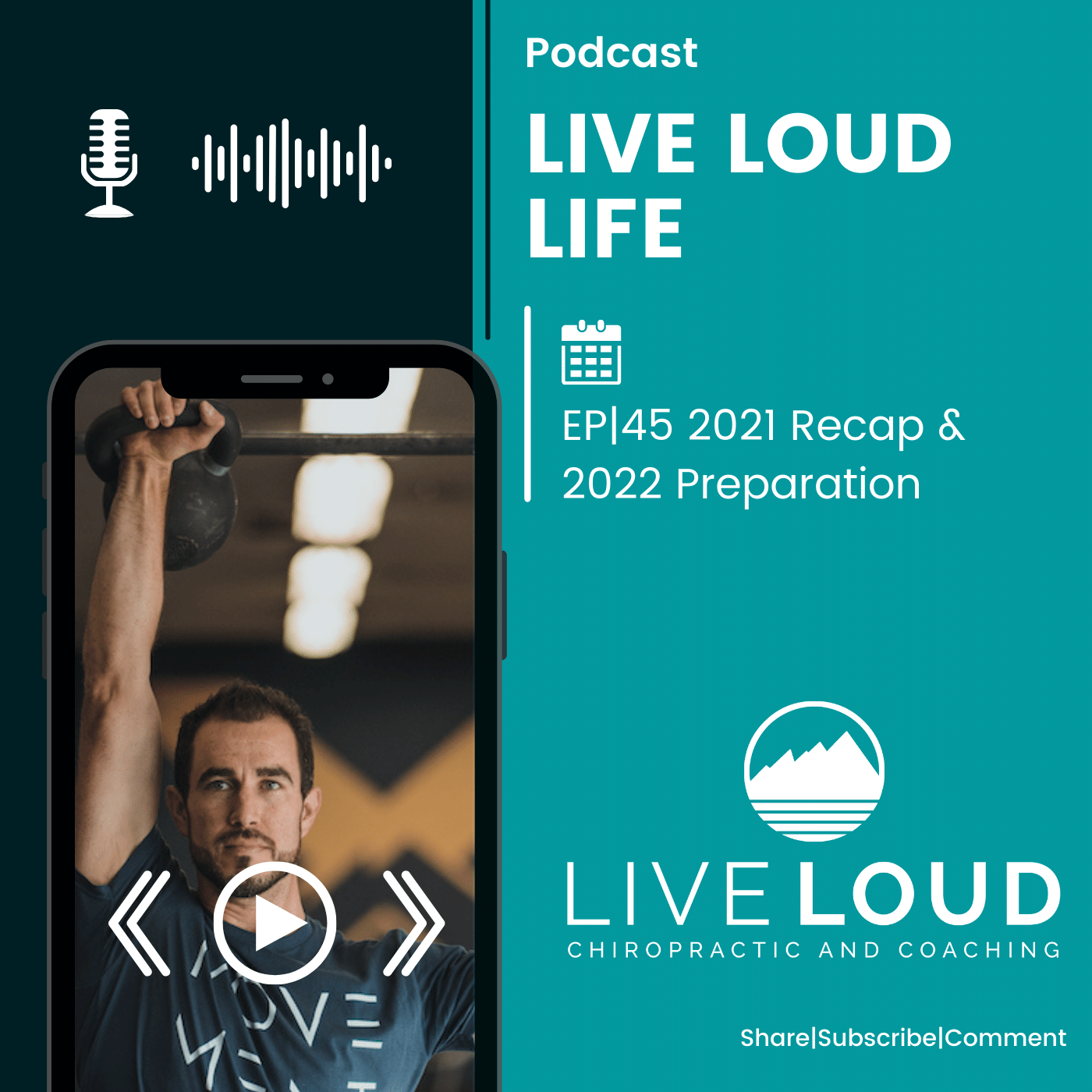Fix Your Hip Pain Today | Hip Pain Explained
One of the more challenging aches and pains or conditions to work through is hip pain.
What makes it so challenging?
Well, for one the nature of the joint itself. It’s a big ball and socket joint set up structurally to sustain a lot of impact and load. But! We run away from that as a solution when we’re talking about dealing with hip pain.
You have to understand and have a provider that knows:
- Mechanics
- Loading principles
- Rehab principles
These three things are KEY to helping you best find a solution for dealing with your hip pain.
PLAY VIDEO ⬇︎
Now, if you have hip pain, we’re going to walk you through (make sure you watch the video attached to see this live):
- A couple of reasons as to why hip pain might be generated
- Especially certain regions
- Front of the hip
- Back of the hip
- Side of the hip
- Especially certain regions
- A few tools that you need to understand to help you deal with pain immediately
- Foundational principles about why it happens so you can have a better conversation with your provider about dealing with hip pain
Running away from Load vs. Loading being the best for you Hip Pain?
Again, running away from the load is not the solution!
Loading is actually the best thing that you can be doing if done appropriately. So, if you’re dealing with hip pain, whether again, it’s on the front side, or maybe even something in the back, and you want to get back to your activities, like running, CrossFit, hiking, or anything like that, this blog and video will be very helpful for you.
I’m Dr, Antonio Gurule with Live Loud Chiropractic and Coaching. We’re based here in Lafayette, Colorado, in Boulder County.
We LOVE helping individuals such as yourself, overcome the fear and anxiety of having pain, and gain more confidence and understanding about how your body moves so that you can go out and live the loud adventurous life that you are made for!
Let’s Dive into Hip Pain
The hip is a very robust joint, it is intended to be able to support your full body weight down into the ground, whether you’re walking, whether you’re running, whether you’re jumping.
Note: It is very, very hard to damage anything within the structure, but it can happen.
Our goal is to help you determine:
- Is there something actually that’s damaged within the hip that’s causing your hip pain?
- Or is it something that kind of built up as maybe an overuse injury
- Or maybe it’s just a technique issue
What we’ve determined with some of our other condition videos like Shoulder Pain or Back Pain and if you have not seen those, please be sure to go check those out!
Real Life Hip Pain Scenario and Solution
I just had a conversation with a mom the other day who is postpartum and wants to get back to running. Previously, before pregnancy, she was running anywhere between three to six miles and so she wanted to go back to that immediately. But she was pregnant and postpartum. Her body went through a lot of changes, not knowing that we needed to regain a lot of the progressions that got her to three to six miles before.
She thought, “oh, I used to be able to do this before I could just go back to that.” She came in having a lot of hip pain, not because something was wrong with her hip, but because she got back to three to six miles, way too soon.
So, we have to understand there’s a necessary progression and where most people are having issues like in the side butt area, this is where all your hip stabilizers are.
When you translate weight from one foot to the other, you’re going to feel that side butt area and those hips engage, that’s what helps stabilizes your ball and socket joint when you transfer your weight side to side.
So, this is one of the main areas that we’re going to be dealing with when we’re dealing with hip pain. Fortunately, these are fairly easy fixes, you have to understand the whole loading progression.
We’re going to have an extensive conversation around that. If you need help coaching or reprogramming that we can also help you with that here at Live Loud Chiropractic and Coaching.
A Couple of Things to Assess for Hip Pain
- First, we have to look at the range of motion.
- So, we’re going to look at the squat stance, and we’re just going to watch the squat. Right, we’re looking for any sort of shifting discrepancies, pain that might be occurring from that.
- Second, single-leg lunge
- So that we are biased, only loading one side more than the other
- Next, single leg arc pattern
- You’re going to do lift one knee, slowly kind of tilt back into a single leg RDL and then come back up
- We’re looking for if you have strength but also stability
Necessary Progressions for Hip Pain
The assessment above is important to determine the necessary progressions. We might have to take a step back and work on balance control and proprioception before getting you back into all the impact stuff that you want to be able to do.
Now, strength is a component of that. On top of that, though, we also have to look at dealing with some soft tissue. As we indicated already, sometimes your hip pain is an overloading issue and the muscles might just be sore.
Soft Tissue Work for Your Hip Pain
Having strong able-bodied manual therapists to understand where to work, whether that’s with our hands, dry needling, or cupping, to help you basically work on the soft tissue structures because you do want to work out hard, you do want to do all these activities. Sometimes it’s just supportive nature, nothing’s actually wrong, you just need someone to know how to work into the area.
At home, you can do a lot of this yourself! You can stand up against a wall and explore the hip bone and different parts of the hip.
So essentially, we’re just trying to get into all of these nooks and crannies, and all these areas with the soft tissues and the muscles to help alleviate the symptoms of these muscles is grabbing and working hard.
Addressing Load Progressions with Hip Pain
Now, that’s the best-case scenario, let’s say for instance, it is something a little bit more in-depth, we have to address the loading progressions then that are directly affecting the pain you are feeling.
When the femur and the socket are pinching up against each other, we refer to this as FAI or femoral acetabular impingement.
Now, the reason why I’m addressing this is this is my soapbox, too many people are being told to squat with their feet, shoulder or hip-width apart, and their toe straight. Certain anatomy will just not dictate and allow you to do that. For some, it might work well; for others, it does not.
You have to determine the best squat stance based on your anatomy so that you’re not jamming your hip into the front.
Squat Pattern and Your Hip Pain
Typically, this presents as pinching in the front of the hip or a very tight psoas which gets blamed for way too much on the front side because it’s guarding and protecting your hip from being jammed up.
When we’re squatting, you can see if a person is off balance. If the toes want to raise up a little bit and they can’t get down very far. Now, this is for other people because you will look at this and say,
“Oh, well, you know, lift your chest more, let me see more of your chest. If you had like your name on front of it, all that would do is force her to crank or backup, creating issues in the back. Or they’ll say they have ankle range of motion limitations because it doesn’t look like the ankles going far very far for those are neither nor the case.”
It’s just that the way you might be stacked, your joints can’t work together. The solution could be to open up your stance simply.
Conclusion for Hip Pain
So, we have now determined that it wasn’t a mobility issue at all, we were just simply using the wrong pattern. Now, what this also does is it clears the hip. If we’re too narrow, again, that femur runs into the socket. Whereas if we go wider, and now allows your hip to deepen its amount of flexion.
If you’re having a pinchy hip when squatting or doing something like that, I almost guarantee you that going slightly wider will improve your symptoms, if not improve your squat pattern and in general, allowing you to lift more.
So, at home a few things that you want to do basic soft tissue, your hip, being how big it is, it’s usually just that it’s getting overloaded, and the muscles are just generally a little bit tight. And a little bit of trigger point work goes a long way. But if you’re dealing with the more pinchy front hip issue, a wider stance will be a game changer for you.
Now, many of these conditions are somewhat acute in nature, because we either had this rapid increase of load progression, or we just started squatting more, we now feel this.
Having someone help you navigate that will make a big difference so that you don’t have to take a lot of time off. You don’t have to take a step back. But if this is something that’s chronic, and it’s really been hindering what you’ve been able to do, don’t wait any longer come in and see us have a proper assessment and evaluation done to determine if it’s soft tissue if it’s structural, or if it’s just simply we need better load progressions or understanding how to get stronger without irritating.
If you’re ready to deal with your hip pain once and for all come in and see us get a proper assessment done! Get a proper evaluation done to determine if it is soft tissue, structural, or simply just a lack of understanding on how to load through a progressive way properly.
Whatever it is we here at Live Loud Chiropractic and Coaching in Lafayette, CO are ready to help serve you and your hip pain!




